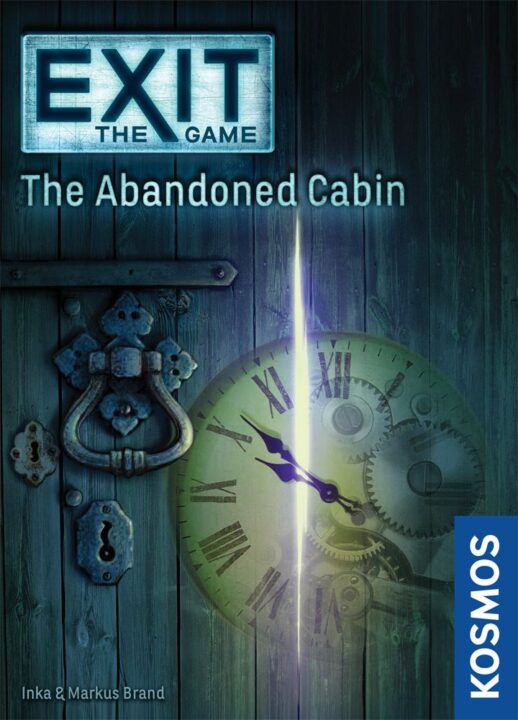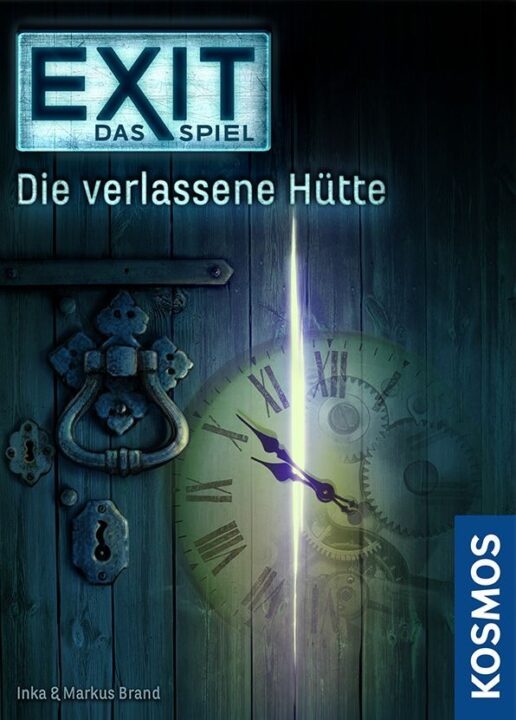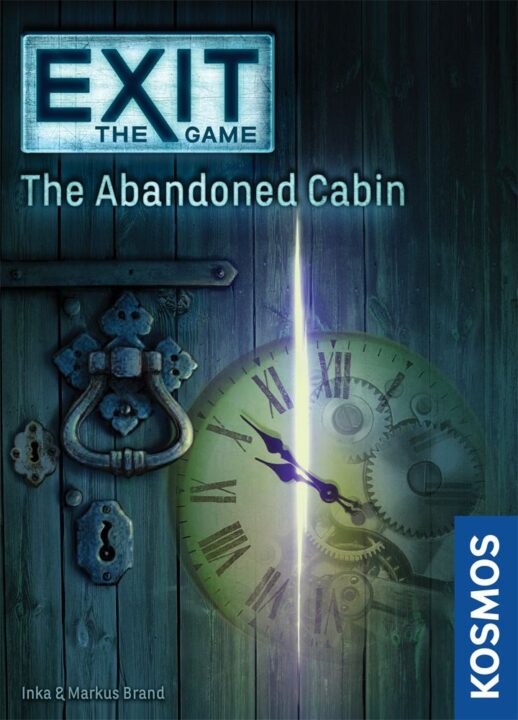Overview
Welcome to the latest deep-dive! Today we’ll navigate the enthralling enigmas unearthed in ‘Exit: The Game – The Abandoned Cabin.’ In this review, we’ll assess critically how this tabletop experience branches from the norm. Strap in as we unravel the folds of its innovative puzzle mechanics, tackle the steep, yet satisfying, difficulty curve, and weigh the pros and cons of its debated single-use nature. ‘Exit: The Game’ invites board game enthusiasts into a realm where wit meets realism in a race against time.
How It Plays
Dive into the essence of an escape room experience with ‘Exit: The Game – The Abandoned Cabin’. This enthralling board game challenges you and your teammates in a race against time to solve puzzles and escape a thematic scenario.
Setting Up
To set up, simply open the game box which contains a booklet, a decoder disk, and multiple types of cards – puzzles, answers, and helps. Lay out the materials and have a pen and paper ready for note-taking and solving puzzles.
Gameplay
As you flip through the riddle and answer cards, players work collaboratively to tackle challenges and decipher codes. Interaction as well as discussion are crucial as you use the decoder disk to check proposed solutions. If correct, progression in the game occurs, leading to more complex puzzles.
Winning the Game
Victory is achieved by successfully solving the final puzzle and ‘escaping’ the site depicted in the game’s narrative. Your score is then determined by the time taken to escape and the number of help cards used, signifying not just success, but efficiency in gameplay.
Want to know more? Read our extensive strategy guide for Exit: The Game – The Abandoned Cabin.
Innovation Locked within Puzzles
Exploring the nooks and crannies of Exit: The Game – The Abandoned Cabin leads to a treasure trove of innovative puzzles. These ingeniously crafted challenges shift the norm, encompassing an array of manipulatives that go beyond mere pen and paper. Importantly, the game introduces interactive components into the puzzle design, adding a tactile dimension that enhances engagement.
Breaking the Mold
Frequently, I’d marvel at the game’s clever integration of physical components, finding myself folding, flipping, and even tearing materials to unveil solutions. Transitioning smoothly between puzzles, each solution feels like a Eureka moment, most captivating when the path to success requires an unexpected twist of perception. Moreover, this design excellence thoroughly ensures that no two puzzles feel alike, cultivating a sense of novelty throughout.
Embodied Challenges
Remarkably, ‘Exit’ delivers a sensory experience as well, intertwining the tactile puzzles with the thematic ambiance. The satisfaction derived from physically manipulating puzzles reinforces the sense of accomplishment. With each resolved conundrum, players are drawn deeper into the cabin’s mysterious aura. Indeed, innovation is the heart of this game’s puzzle design.
Having delved into the intricate world of innovative puzzles in Exit, it’s now time to scale the engaging and shrewd difficulty curve.

Mastering the Escalation
In our review of Exit: The Game
– The Abandoned Cabin, what stands out is the game’s engaging difficulty curve that elevates the entire playing experience. Early puzzles serve as introductory tasks, yet hint at the complexity awaiting ahead. From this mild beginning, the ascent in challenge is designed so seamlessly that players scarcely notice the hike in cognitive demand—starting from square one,
Growth Through Gameplay
players grow alongside their tasks. Each solved riddle feels like a stepping stone building confidence. Undoubtedly, the genius lies not just in puzzle complexity, but in how that difficulty encourages group dynamics and collective problem-solving, which shines at its peak when triumph seems farthest. It is this climbing difficulty that profoundly rewards cooperation.
A Climbing Curve Inviting Success
Despite this upward trend, rare is the emergence of unfair roadblocks. Indeed, many players voice relief after conquering puzzles that initially seemed unsolvable. This mastery through escalation ensures that

Dissecting Single-Use Component Implications
The debate around single-use components in board games like ‘Exit: The Game – The Abandoned Cabin’ ignites a multifaceted discussion on replayability versus immediacy of experience. Admittedly, the single-use nature might sound limiting at first glance, and yet, there’s a thrill inherent to this format that cannot be understated. Namely, the palpable sense of permanence it administers calls for heightened involvement from players, distinguishing each decision made within the game’s tightly woven fabric of riddles.
Environmental and Economic Considerations
With climate awareness escalating, the environmental impact of disposable components comes into the spotlight. Critics might question the sustainability of a game that appears to encourage single playthroughs; conversely, enthusiasts advocate for the memorable, immersive puzzles these one-time elements engender. It’s a balancing act between eco-conscious gaming and ensuring those unique ‘aha!’ moments remain poignant and memorable. Furthermore, from an economic perspective, the trade-off between the shelf-life of the game and its cost demands examination.
Transient Art or Reusable Asset?
One must consider whether ‘Exit: The Game – The Abandoned Cabin’ succeeds as a transient work of art or stumbles as a reusable asset, and in this debate, singularity might just be its artistic statement. Its singularity crafts an ambience where every scribble, fold, or tear gained through game-led instructions enriches the narrative for that session’s unique audience. Ultimately, the capacity for repeated enjoyment is conceded but replaced by immensely fulfilling, albeit brief, escapades into problem-solving.
In conclusion, while ‘The Abandoned Cabin’ certainly strides on the path less trodden with its single-use structure, the potential for potent group experiences it provides arguably overshadows its limitations. For those seeking a memorable, if not fleeting collective challenge, this game comes recommended.
Conclusion
In conclusion, put a pin in our dissection of Exit: The Game – The Abandoned Cabin. From its intricate puzzle design that challenges your wits, to the engaging, well-tempered difficulty curve that ratchets up the tension just right, and the unique considerations created by its single-use components thing – this experience is a thrilling computational roller coaster ride. Its distinctive design guarantees every play is a unique endeavor. Although the irreversible nature of the gameplay might deter replayability, the richness of the singular experience it offers arguably turns this into an asset rather than a shortcoming. This review aims to have navigated you through the heart of the gameplay, and if you’re a puzzle enthusiast who relishes cooperative deduction and clever problem-solving, this game is well worth the trip to the cabin. So there you have it, our comprehensive review of Exit: The Game – The Abandoned Cabin, urging you to muster your smarts, gather your comrades, and venture in, for a memorable escape room adventure.


